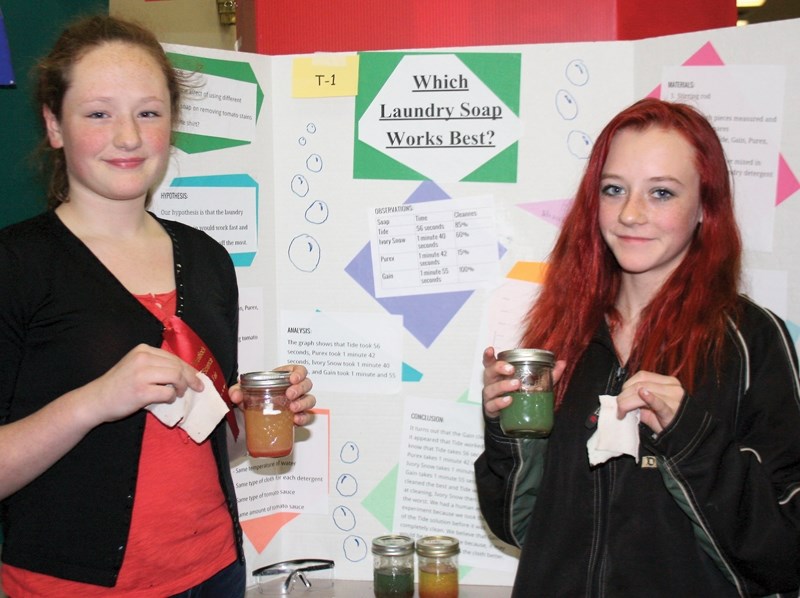Science was under the microscope at the Westlock and District Community Hall last week with more than 75 projects on exhibit at the 47th annual Westlock Local Science Fair.
On Thursday, March 3, 77 projects were entered and roughly 110 students from Grades 1-9 competed, representing schools from Westlock, Clyde, Busby, Dunstable, Dapp and Swan Hills.
“Our numbers have historically been a bit higher, but we’re happy with the numbers we had this year,” said Westlock Local Science Fair Committee president Tammy Tkachuk.
“Last year we had a lower-numbers year and we were back up by about 25 projects this year. It was a good showing.”
Topics ranged from exploring renewable energy to determining how music affects blood pressure.
“We always get a huge range of projects. From some of the little kids we get projects about how a plant grows, or which plant grows best,” Tkachuk said.
“It goes all the way up to more sophisticated projects on issues of water purity, soil conservation, as we move up to the junior high level.”
Tkachuk said one of the fair’s goals is to help strengthen interest in science.
“One of the things about science fairs is it gives kids a chance to follow an interest, follow something that they’re passionate about,” she said.
“It doesn’t have to be a topic they’re learning about in school, it could be [something] they find intriguing. It helps to build their inquiry skills, research skills, and scientific method and experimentation skills.
“It develops their love of science and learning.”
The Top 3 projects in each category move on to compete at the Edmonton Regional Science Fair next month.
“We’ll have lots of students going on to represent us in Edmonton after tonight,” said Tkachuk.
PNCS Grade 7 student Jayce Tomlinson explored solar power versus wind power for his project in the Grade 7/8 physical sciences category.
“I found out that wind power works a lot better in the times of the year when it’s windier and works better on the coast and down south where there’s a lot more wind,” Tomlinson said.
“Solar power works better in summer and it works a lot better in the desert and places like that.”
He said it was his interest in how the technology worked that compelled him to pick the topic.
“I liked the idea that solar panels can create power from the sun,” he said.
Tomlinson built a small-scale wind turbine and used a small solar panel to test his theory.
Busby School teacher and fair judge Jim Schaffer said he noticed lots of diversity and quality amongst the projects.
“A lot of projects related to consumerism such as what paper towel works the best, how much sugar is in pop,” Schaffer said.
“Some were outside the box like one group make a smelting machine to heat iron, another one was thinking about how to make hydrogen engines, obviously he couldn’t build one, but he did a lot of research.
“It was a good variety, so that was good to see.”
The Edmonton Regional Science Fair runs April 9-10 and is held at the Northern Alberta Institute of Technology.



